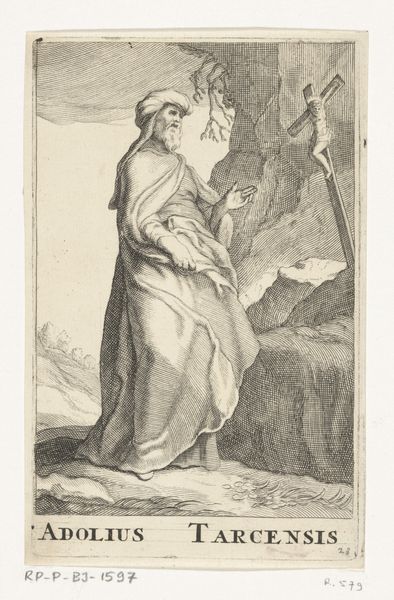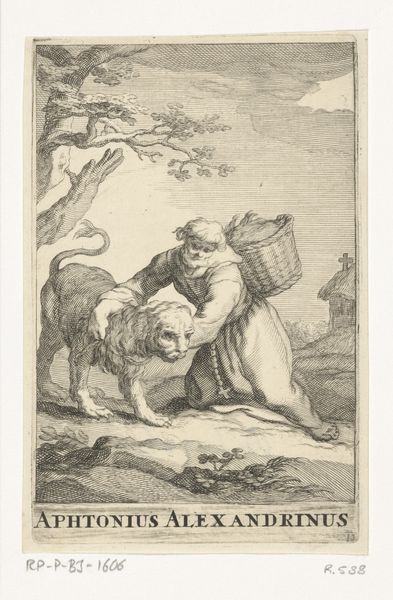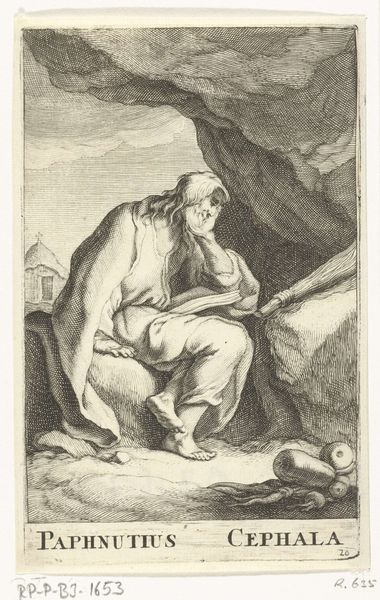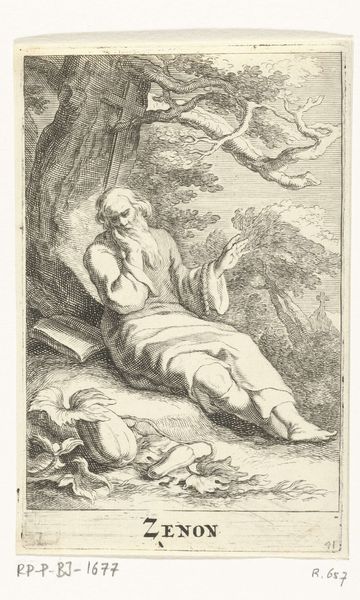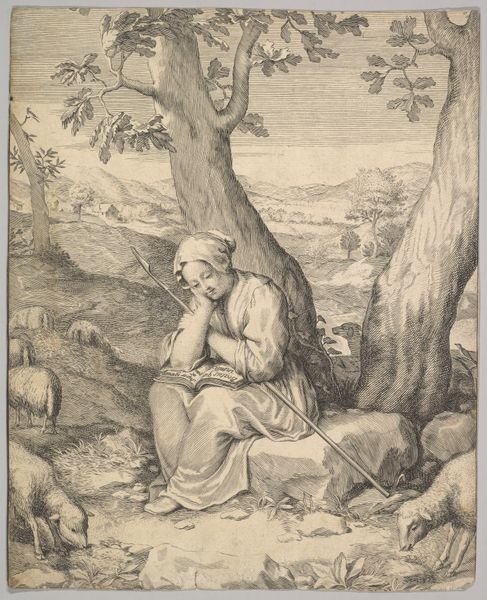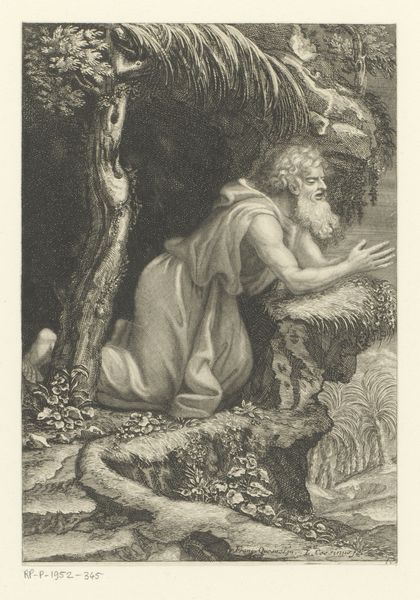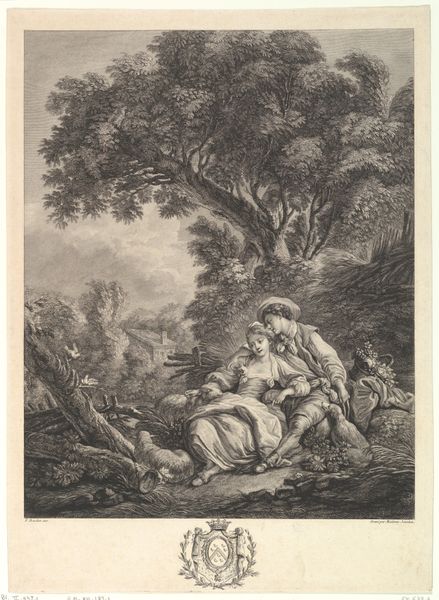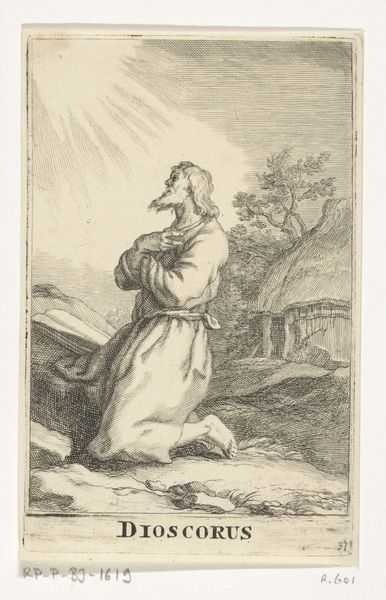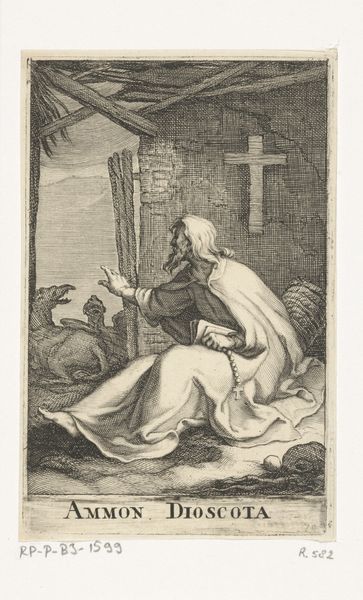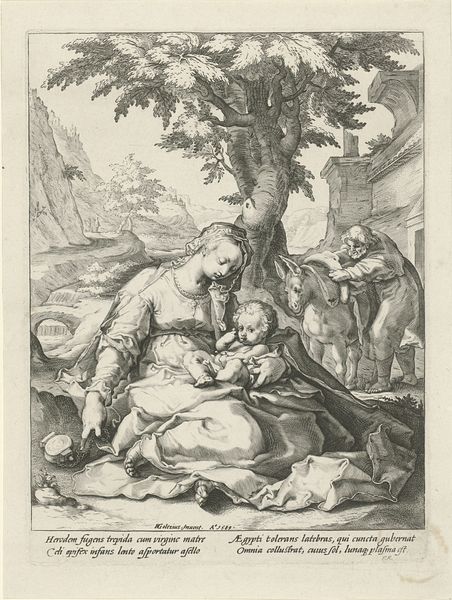
Dimensions: height 135 mm, width 85 mm
Copyright: Rijks Museum: Open Domain
Curator: Look at this intriguing etching, "Heilige Cronius van de Cellen," or "Saint Cronius of the Cells," created sometime after 1636 by Frederick Bloemaert. It's part of the Rijksmuseum collection. Editor: It strikes me immediately as a portrait of contemplative sorrow, etched with a delicate hand. The weight of the ages seems to settle on the figure. What symbols are immediately grabbing your eye? Curator: Beyond the saint himself, engrossed in his book with a rather melancholic air, a stark skull rests beside a simple wooden cross. Below, a few terrestrial signifiers of an apple and bible surrounded by small flora. Given Bloemaert's focus on religious subjects, the etching likely participates in larger visual conversations surrounding spirituality in 17th-century Europe. Editor: The skull as a memento mori, of course, paired with the promise of salvation represented by the cross, drives home the transience of life against the eternal backdrop of faith. This engraving is rife with religious and Vanitas symbols of life, death, and resurrection in an orthodox fashion. What might his selection say about contemporary society in that period? Curator: Religious life was absolutely central to many communities, even within the rising merchant societies. Bloemaert was working during a time of immense social upheaval in the Netherlands and beyond. As such, representations of figures known for quiet contemplation and religious devotion arguably offered solace amid anxieties, potentially endorsing prevailing ideologies. The etching would have likely circulated as a mass produced object. Editor: That mass circulation would likely make its reception tied to the public, but how can the visuality connect to the public life of religion beyond personal introspection. Do these familiar symbols help shape shared cultural meanings, acting as a kind of shorthand for spiritual contemplation? Curator: Exactly. Think about it; this easily distributed artwork becomes a means of reinforcing and propagating societal values and expectations centered on devotion. Even small prints can shape public thought and reinforce hierarchies of power. Editor: These visual narratives contribute powerfully to the social fabric. Even in quiet acts of devotion, we're implicated in cultural discourses, thanks to the symbols embedded in artwork like Bloemaert’s etching. It leaves me contemplating the lasting influence images can wield. Curator: Indeed, reminding us of art's capacity to be both intensely personal and profoundly societal.
Comments
No comments
Be the first to comment and join the conversation on the ultimate creative platform.
